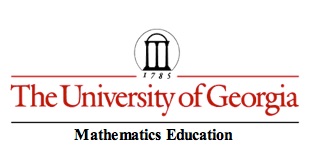
EXPLORATIONS AND PROBLEM SOLVING WITH HERON'S FORMULA
AND ALTERNATIVE PROOFS

EXPLORATIONS AND PROBLEM SOLVING WITH HERON'S FORMULA
AND ALTERNATIVE PROOFS
Jim Wilson
University of Georgia
Presentation to NCTM Annual Meeting 17 Apr 2015, Boston.
Introduction
Heron's formula for the area of a triangle with sides of
length a, b, c and the semiperimeter is
A Modern (and Elegant) Geometric Derivation(1)
This derivation uses the incircle and the excircle to one side to determine two pairs of similar triangles that allow derivation of the radius r of the incircle in terms of the lengths of the sides.
A Modern (and Elegant) Geometric Derivation(2)
Same derivation but different write-up.
A Derivation using Complex Numbers
An Algebraic Derivation
This proof is straightforward and tedious. It has enough chances to mess up the algebra notation but is generally easy to follow. The altitude h to one of the sides is expressed in terms of the lengths of the sides and the semiperimeter is used only at the end to simplify the formula. Alternate forms of Heron's formula are sometimes given without use of the semiperimeter.
In this approach Heron uses some seemingly unrelated similarities and cyclic quadrilaterals to determine a value for the radius r of the incircle in terms of the lengths of the sides
Using the Sine and Cosine functions
This approach is very similar to the Algebraic approach shown earlier. It really makes minimal use of trigonometry. In this approach, the starting point is the formula for the area of a triangle is half the product of the sine of an angle and the lengths of its adjacent sides.
In this approach I will use some notation that has been seen previously. We have the incircle and its points of tangency with equal distances from the vertices.
The shaded triangle is a right triangle with legs of r and s - a. The cotangent can readily be expressed in terms of r and s - a.
In this section, a few explorations and problems are presented, some with comments, some just stated.
Perfect Triangles
Return